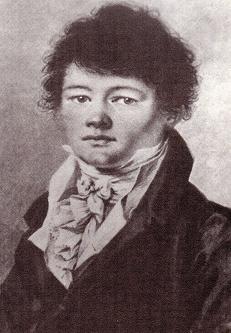
|
'Wimbledon school was a private boarding school at which some sixty boys
between the ages of 6 and 16 received an ordinary English education... On 30 June [1803], Arthur Schopenhauer drove out to Wimbledon, on his own, to begin what perhaps best be described as his incarceration...What he found and experienced there came as a very nasty shock indeed... After the lengthy service at St Mary's there remained the horrors of an English boarding school Sunday, to say nothing of being marched off to St Mary's again in the afternoon and school prayers in the evening... It was not the alien routines and mechanical style of instruction that irked him most. Within a matter of hours he seems to have taken a violent dislike to his English headmaster and everything he stood for. Schopenhauer's intemperately expressed dislike of English ecclesiastical superstition and the narrow-mindedness and the Church-ridden nature of the country's institutions (particularly its educational system) was to be repeated throughout his work for the rest of his life...' (Patrick Bridgwater, Arthur Schopenhauer's English Schooling (Routledge, London, 1988), pp.271, 279,280, 315, 361). 'In England he was three months at a Wimbledon boarding-school kept by a clergyman. This experience he found extremely irksome'. (Thomas Whittaker, Schopenhauer (Archibald, Constable & Co., London, 1909), p.4). 'He was consigned to a boarding-school in Wimbledon, whose narrow, disciplinarian, religious outlook (a marked contrast to the education he had hitherto received) made a negative impression that was to last. He was a seething, belligerent pupil who would not submit to the stultifying practices that surrounded him, and he seemed quite isolated in his defiance'. (Christopher Janaway, Schopenhauer: A Short Introduction (OUP, New York, 1994), p.2).  Gerhard von Kügelgen's portrait of Schopenhauer, aged 15 (1803) |
|
As noted, Schopenhauer's one-term attendance in 1803
at the Wimbledon School and St Mary's Church influenced him for the rest
of his life. The school building was originally Eagle House, built ca.1615 as a country house for Robert Bell: after this, it was owned by Sir Richard Betenson, Richard Ivatt, and then by George Bond. It was sold to the Reverand Thomas Lancaster in 1789-90 who used it to house the 'Wimbledon School for Young Gentlemen and Noblemen'. Lord Nelson and Lady Hamilton visited the school in 1805, after which it was renamed the Nelson House School/Academy (at one time, the school was also known as 'Blackenbury's'). Thomas Graham Jackson purchased the building in 1887 and restored much of it to its pre-school days. From 1989, the Al-Furqan Islamic Heritage Foundation was located there. In March 2016, Wimbledon museum advised: 'Eagle House...is currently being turned into apartments by Octagon Developments Ltd. in conjunction with Criterion Capital'. The Evening Standard published an article about this. Advertisements in 2024 showed apartments in the converted building were being offered for in excess of two million pounds(!) (There is now a "blue plaque" commemorating Schopenhauer's (short) stay at the school.) In the case of St Mary's church (30 St Mary's Road, Wimbledon, London SW19 7BP), there have been four churches on the site since 1086: Medieval Church -11th Cent to 13th Cent: Second Church - Late 13th Cent until 1780s; Georgian Church - 1780s to 1840s (the church that Schopenhauer attended): Victorian Church - from 1843 to the present time. Information and images about both locations may be found in those links below: |
|
|
